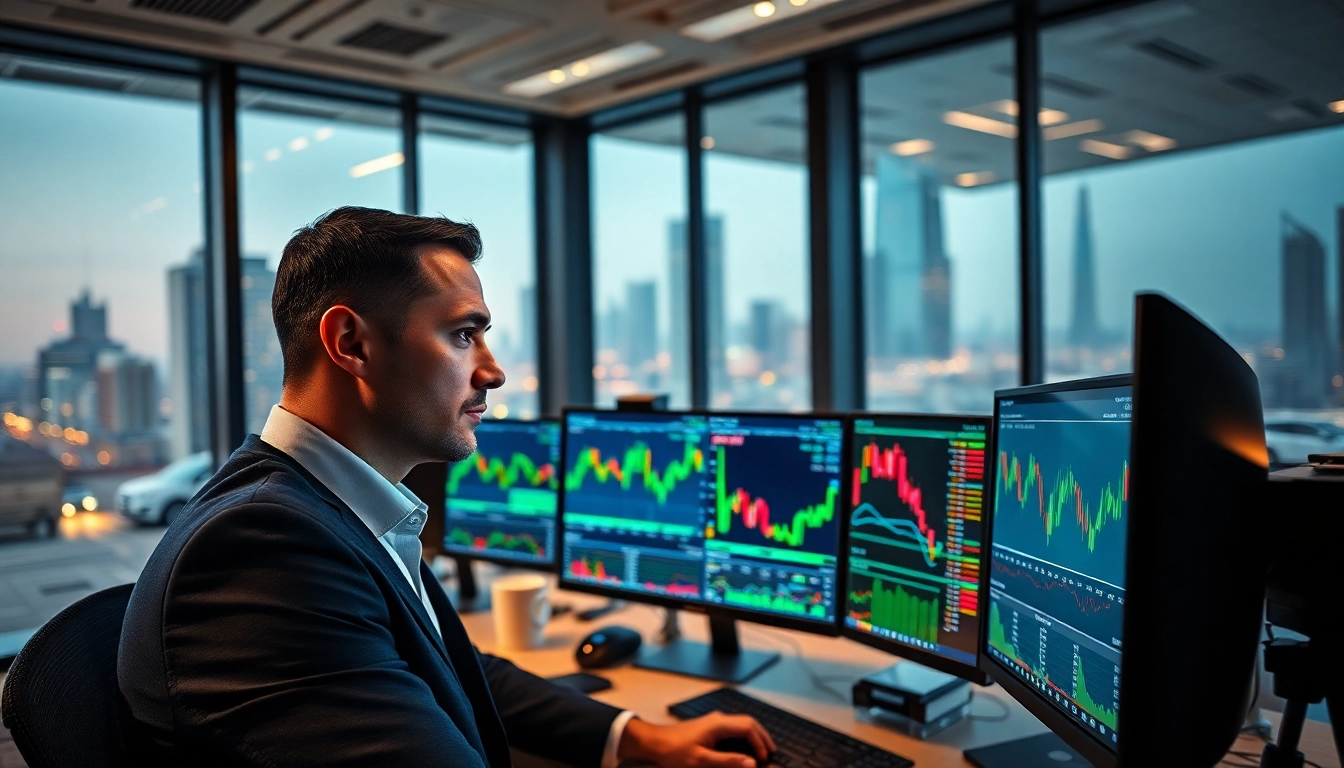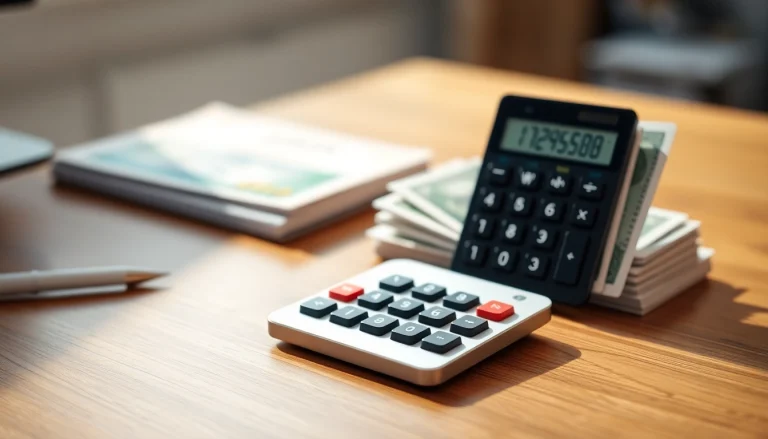Understanding Trade Futures: Concepts and Terminology
What Are Trade Futures?
Trade futures are financial contracts obligating the buyer to purchase, and the seller to sell, an asset at a predetermined future date and price. These contracts are primarily used for trading commodities, currencies, and financial instruments, enabling investors to hedge against price fluctuations or speculate on future price changes. The essence of trade futures lies in their standardization and trading on futures exchanges, facilitating transparency and liquidity in the market. When engaging in the marketplace, understanding the specifics behind trade futures is essential, as it allows traders to make informed decisions based on market conditions and personal investment strategies.
Key Terminology in Trade Futures
For anyone entering the world of trade futures, familiarizing oneself with key terminology is crucial. Here are some foundational terms:
- Contract Size: The quantity of the underlying asset standardized in a futures contract.
- Expiration Date: The date when the futures contract must be settled.
- Margin: The minimum deposit required to open and maintain a futures position, which allows traders to leverage their positions.
- Clarity of Contracts: Futures contracts are standardized agreements that outline the specifics of the transaction, ensuring all parties have clear expectations.
- Roll Over: The process of closing a futures position as it nears expiration and opening a new one with a later expiration date.
The Importance of Futures in Market Trading
Futures are integral to modern financial markets, serving multiple key purposes. They provide a mechanism for price discovery; help to mitigate the risk of adverse price movements; and they enable market participants, from producers to speculators, to enter into positions that reflect their market views. For instance, a farmer may use futures to lock in prices for their crop before harvest, while an investor might speculate on price movements, aiming for profits. This dual functionality of trade futures creates a dynamic market that attracts diverse participants, all seeking to leverage their positions effectively.
Benefits of Engaging in Trade Futures
Leverage and Margin in Trade Futures
One of the most significant benefits of trading futures is the use of leverage. Traders can control a large position with a relatively small amount of capital, known as margin. For example, if a futures contract representing $100,000 worth of a commodity requires a margin of only $5,000, an investor can potentially increase their returns, while also amplifying their risk. It is essential to understand that leveraging can lead to drastic losses as well, so prudent risk management is key when utilizing this aspect of futures trading.
Hedging Risks with Trade Futures
Hedging is a strategy employed by many traders to reduce the risk of adverse price movements in an asset. By taking positions in the futures market, a trader can offset potential losses in their primary investments. For example, an airline may hedge against rising fuel costs by purchasing fuel futures. In essence, by locking in a price now, they protect their bottom line against future volatility. This strategy of using trade futures as a risk management tool helps stabilize investments across various sectors, making futures an effective part of a diversified portfolio.
Diverse Opportunities in Different Markets
The futures market is immensely diverse; it encompasses a wide range of assets, from agricultural products like corn and wheat to financial instruments such as stock indices and interest rates. This variety offers traders substantial opportunities to find niches that fit their strategies and market understandings. Additionally, futures can often be traded on global exchanges, allowing traders to operate in various time zones and respond to developments in different markets, thus enhancing their trading strategies.
Analyzing Trade Futures Markets
Market Trends and Analysis Techniques
Understanding market trends is crucial when trading futures. Traders employ various analysis techniques, including technical analysis—examining price charts and patterns—as well as fundamental analysis, which looks at economic indicators affecting supply and demand. Moreover, sentiment analysis is employed to gauge market psychology. By utilizing these methods, traders can form educated predictions regarding directional price movements, crafting strategies that enhance their chances of success.
Using Technical Indicators for Trade Futures
Technical indicators are essential tools within the trader’s arsenal. They can help elucidate trends and price action through statistical data derived from historical price movements. Indicators such as moving averages, Relative Strength Index (RSI), and MACD provide insights into potential market entry and exit points. It is critical for traders to not only understand how these indicators work but to also apply them in conjunction with comprehensive market analysis to augment their trading efficacy.
Fundamental Analysis in Trade Futures
Fundamental analysis involves evaluating economic factors that affect the supply and demand dynamics of the futures market. This could entail monitoring crop reports for agricultural products, economic policies influencing currency futures, or geopolitical factors affecting oil prices. By staying attuned to these indicators, traders can make predictions based on how macroeconomic trends might impact specific futures contracts. The insight gained through fundamental analysis can set the foundation for a successful trading strategy.
Strategies for Successful Trading in Futures
Developing a Trading Plan for Trade Futures
A well-defined trading plan is paramount for success in futures trading. This plan should outline entry and exit strategies, risk management guidelines, and trading goals. Effective traders continually refine their plans based on ongoing market conditions and their personal trading experiences. By adhering to a structured approach, traders can avoid emotional decision-making that often leads to mistakes and losses.
Risk Management in Trade Futures Trading
Risk management is a vital aspect of any trading plan, particularly in the high-risk environment of futures. It encompasses methods such as setting stop-loss orders to limit potential losses, employing position sizing to manage exposure, and diversifying the trading portfolio. Successful traders also frequently reassess their risk management processes to account for market changes, ensuring they remain within acceptable loss thresholds and protect their capital.
Psychological Factors and Trading Discipline
Trading psychology plays a crucial role in the success of futures trading. Emotions such as fear and greed can cloud judgment and lead traders away from their established strategies. Developing mental discipline is essential; traders must remain focused on their trading plan and maintain an objective perspective. Techniques such as maintaining a trading journal to reflect on trades, taking breaks, and engaging in mindfulness practices can aid in cultivating the necessary discipline for successful trading.
Performance Metrics in Trade Futures Trading
Evaluating Trade Futures Success
To assess the success of trading strategies, traders should utilize various performance metrics, including return on investment (ROI), win-loss ratio, and drawdown analysis. These metrics help identify strengths and weaknesses in trading approaches and allow for the adjustment of strategies over time. By systematically evaluating these indicators, traders make informed decisions that enhance their long-term performance and profitability.
Common Pitfalls and How to Avoid Them
Traders often encounter pitfalls such as over-leveraging, ignoring economic indicators, and failing to adhere to their trading plans. To prevent these scenarios, traders must stay educated, continually analyze their strategies, and remain disciplined. It is equally essential to develop a strong foundational knowledge of the markets and to be aware of how impulsive decisions can derail a trading strategy.
Using Feedback Loops to Improve Futures Trading
Utilizing feedback loops is an effective method for enhancing trading performance. This involves reviewing past trades to identify what worked and what didn’t, thereby informing future decision-making. By analyzing both successful trades and losses, traders can refine their strategies, improve their risk management frameworks, and ultimately foster a culture of continuous improvement. Feedback loops can also serve as a motivator, providing traders with insight into their progress over time.








